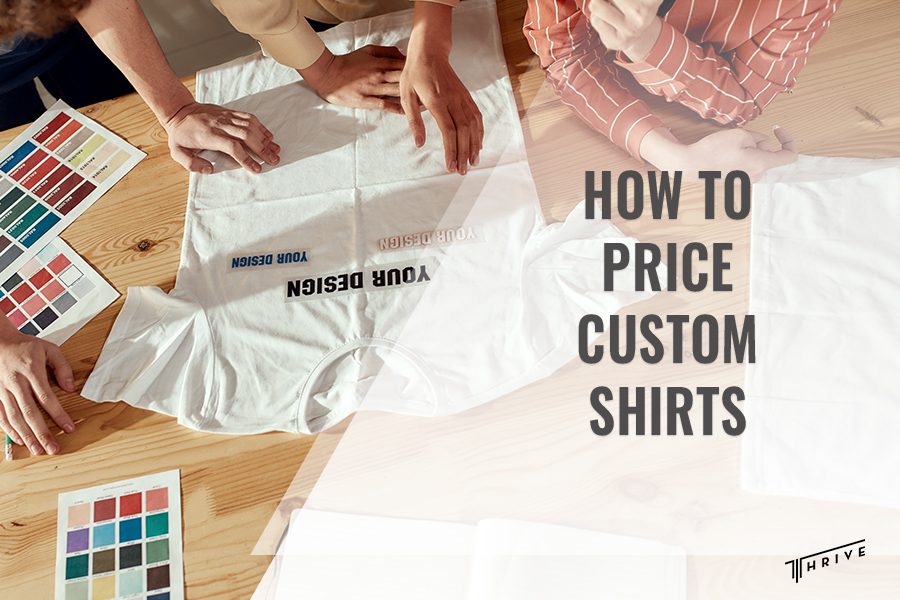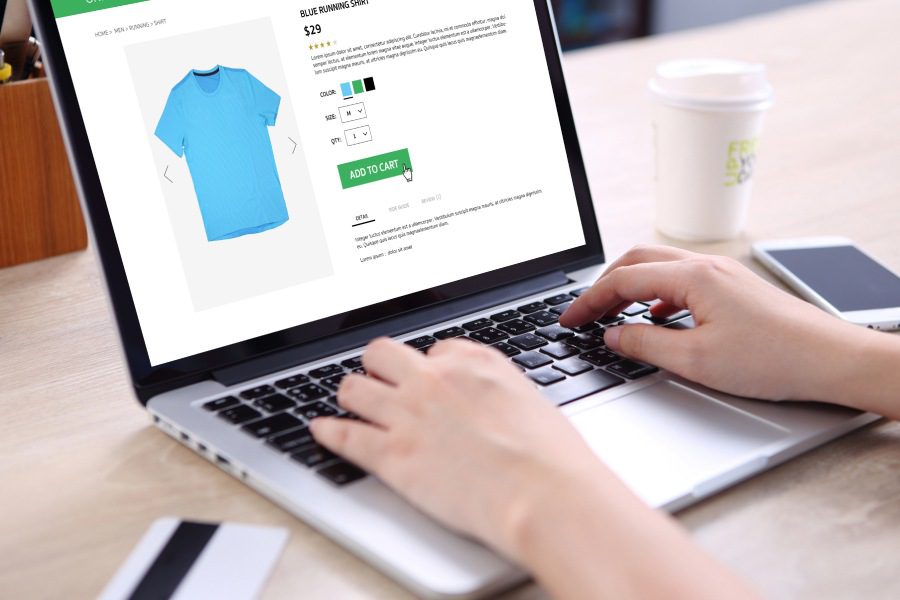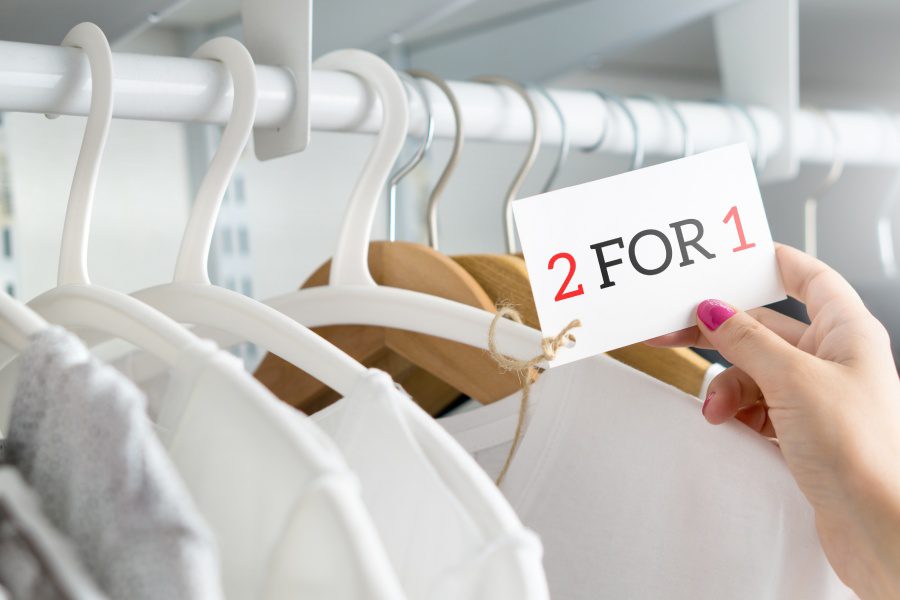
Creating custom shirts has become a creative way to express yourself and make money. However, those who recently started thinking about how to profit from their creative designs often wonder about the average price for a graphic T-shirt. So, you need to learn how to price custom shirts based on the latest pricing strategies.
In this article, we will elaborate on how you can price your custom shirts. We will also discuss the most common pricing strategies and how you can implement them to reach financial stability.
Continue reading to discover how much to charge for custom shirts and the psychology behind it!
How to Price Custom Shirts
You should always find a balance between offering a fair price and protecting yourself from potential losses when considering how to price custom shirts. For that reason, the basic formula people turn to is:
- Total price = production costs + desired profit margin.
That being said, the two most important elements you should consider when deciding on the price of your custom shirts are the following:
- Calculating the product cost
- Choosing a pricing strategy

Calculating the product cost
Before you appoint a fair price for your custom shirts, you must first assess the cost of the production process. As expected, custom merch printing is a long and expensive process involving multiple disciplines and operations.
Now, how much should I charge for custom shirts? Some of the most important costs associated with creating custom shirts are the following:
- Material costs
- Design costs
- Production costs
- Shipping costs
- Marketing costs
- Taxes
Material costs
The first expenses you should consider before deciding on a price for your custom shirts are the material costs. To create custom merch, you first need the garments you will print on. Since you can choose from various shirts, you should determine their cost based on their fabric, such as cotton, polyester, or cotton-polyester blends.
Furthermore, if you’re running an in-house printing operation, you’ll need to take into account the cost of the machinery and the basic printing materials. This includes printing inks and dyes, sewing or embroidery threads, and packaging materials such as branded boxes and plastic bags.
Design costs
While many often overlook the importance of design costs, they play a vital role in pricing your custom shirts. Even if you’re designing the shirts yourself, you must acquire design software such as Adobe Photoshop and Illustrator, which adds to your total expenses. But you can use free or less costly alternatives for design.
Since the design process usually takes up most of the time when creating custom merch, many hire freelancers or in-house designers to meet the audience’s demands. When you combine the labor costs with the design process, missing out on this element can lead to unexpected revenue loss.
Production costs
It is critical to account for time and resources in your production cost calculations. If you’re running an in-house printing operation, you should be mindful of the hourly rates for employees responsible for the process. On the other hand, if you print your designs with the help of third-party printing companies, you must take into account the costs related to their services.
Shipping costs
One of the most expensive aspects of selling custom shirts is the shipping costs. Since most businesses have an online store promoting their products, it’s important to calculate how much it would cost to send the bought item to the customer’s doorstep. Even though many businesses leave the shipping expenses to the customers, you can also add these expenses to the total price.

Marketing costs
If you truly want to increase your sales, you must also be mindful of the marketing costs surrounding the promotion. Since most advertising in today’s age is done online, you should calculate the price of the paid ads based on the platform of your choice.
Whether you prefer social media or search engine advertising, both options allow you a detailed overview of the price related to your advertising campaigns. So, you should always include the total budget spent on advertising in the total production costs.
Taxes
The last production expenses you should be mindful of are potential taxes. Depending on your location, your business may be subject to unique income and sales taxes. That said, we advise you to get well-informed about these regulations and requirements beforehand to better adjust your retail price.
Choosing a pricing strategy
After you’ve calculated your product cost, the next step is to choose a pricing strategy. Even though there are numerous pricing options you can choose from, some of the most commonly used strategies for pricing custom shirts are the following:
- Cost-plus pricing
- Competitive pricing
- Dynamic pricing
- Bundling
Cost-plus pricing
One of the most popular pricing strategies for newcomers is cost-plus pricing. This strategy focuses on the “Total price = production costs + desired profit margin” formula. You’ll need to follow the previous step and calculate each cost associated with the production of your custom shirts.
The most important aspect of this pricing strategy is to choose a desirable profit margin. This markup usually ranges from 20% to 50% in the custom shirts industry. Remember that numerous online calculators can do it if you’re having trouble calculating your profit margins.
Competitive pricing
The second type of pricing strategy you can opt for is known as competitive pricing. The main goal of this strategy is to conduct thorough competitor research on your desired market and compare the selling prices of similar products to yours. Once you do so, you can choose between three primary options, which are the following:
- Pricing your custom shirts below the market average.
- Pricing your custom shirts the same as the market.
- Pricing your custom shirts above the market average.
When choosing how to price your custom shirts based on the market average, you must be careful not to overprice or underprice the products. While overpricing may decrease sales, underpricing can result in low ROI and financial instability.
Dynamic pricing
Another type of pricing strategy you can try out is dynamic pricing. Often considered the most complex pricing option, this value-based pricing requires you to monitor recent sales trends based on products and adjust the prices accordingly.
For example, if you notice an increase in sales on a specific design, you can slowly increase its price to increase your revenue. However, you should be careful not to drastically change the price and discourage the customers from buying it.
Bundling
The last pricing strategy, known as bundling, is used when you want to sell multiple products at once. By offering a discount if the customer buys more than one item, you encourage them to buy more products than they planned, increasing your overall revenue. To successfully execute this strategy, you should bundle complementary products and sell them at a lower price than buying them separately.

Conclusion
Now that you’ve had the opportunity to discover how to price custom shirts, remember to follow the latest pricing strategies to maximize your efforts. Regardless of the strategy you choose, remember to continuously calculate your production costs so you don’t experience revenue loss and financial instability. The best outcomes are always achieved when you offer customers a fair price while also reaching your desired profit margin.
Lastly, if you need an experienced screen-printing team capable of producing a high volume of shelf-ready custom shirts, contact our team at Thrive Screen Printing. We’ll devise the ideal solution for your unique business needs!

Robert Fisher is the founder and CEO of Thrive Screen Printing and brings extensive experience in the screen printing and fulfillment industry.

